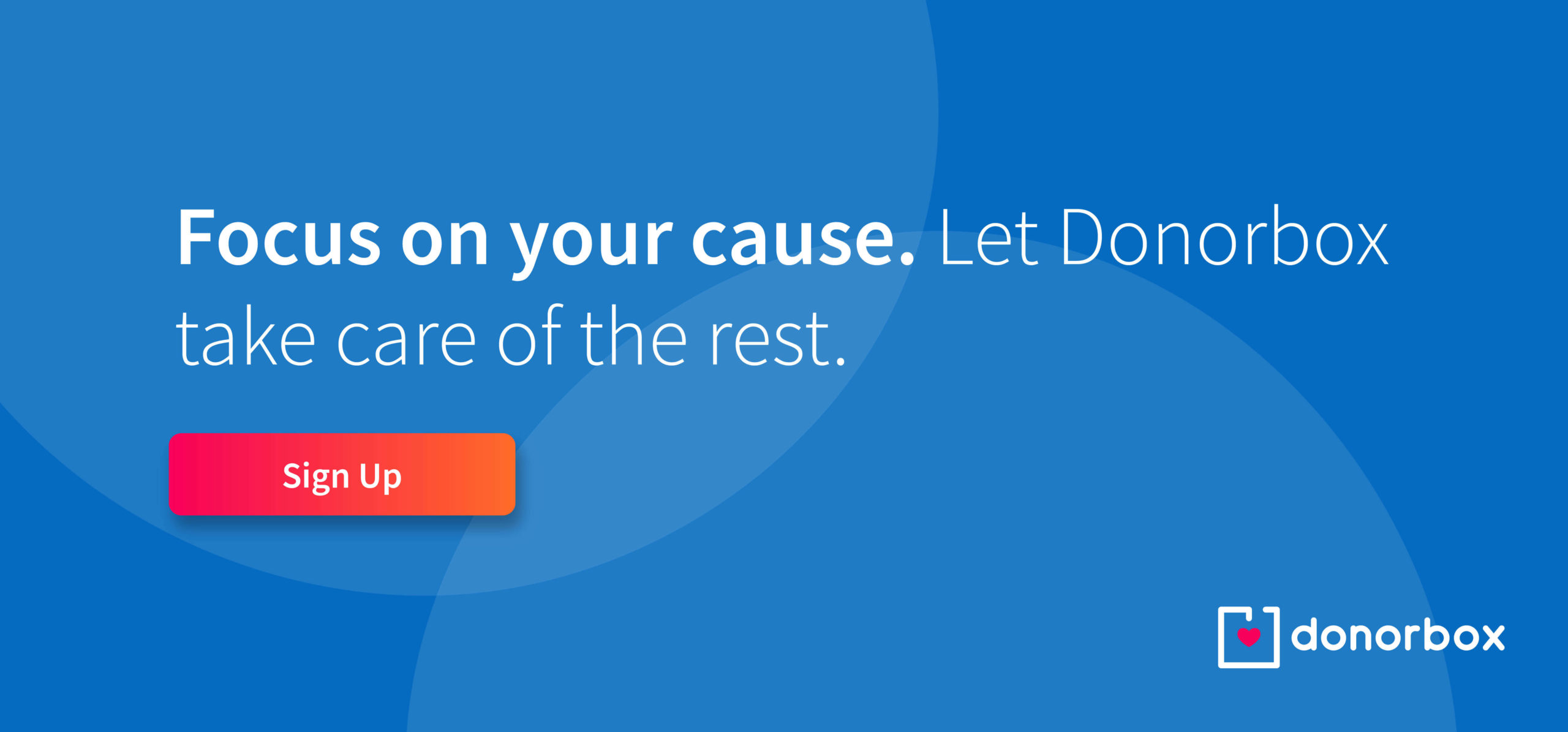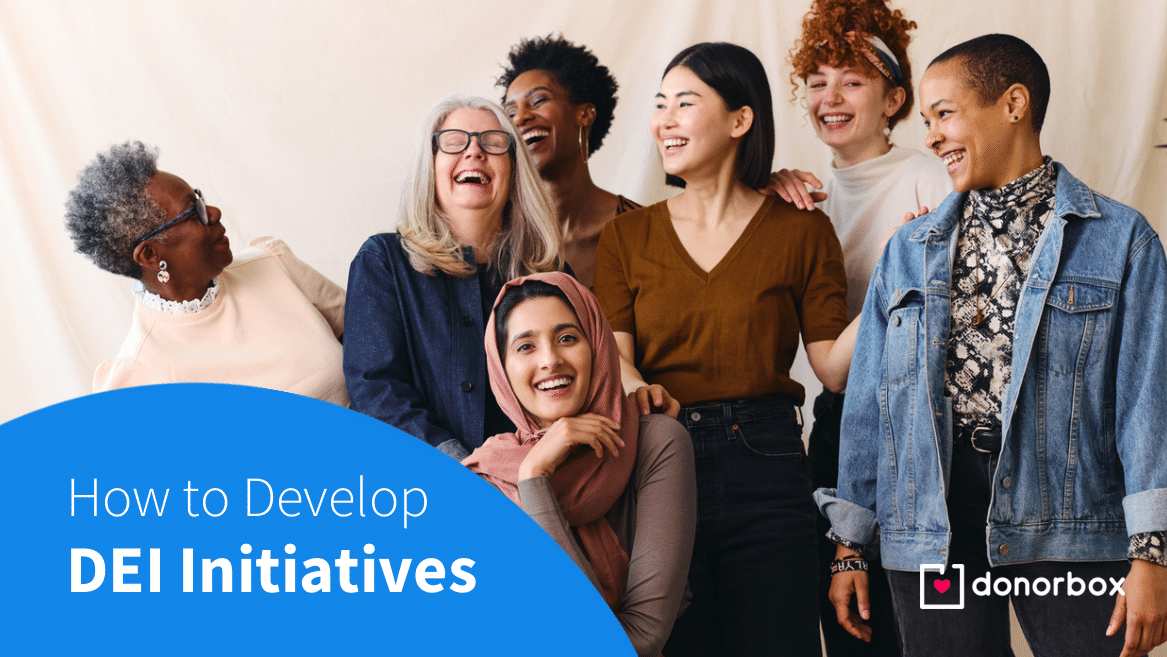DEI initiatives are a popular trend in business. This focus on diversity, equity, and inclusion is a long-awaited win for many, but how do you ensure it’s not just for show? Nonprofits have a responsibility and advantage when adding these initiatives.
This article discusses what DEI initiatives are in real-world situations, how they make nonprofits stronger, and which strategies and programs to adopt. As you look at ways to include these initiatives, there are several departments you can make changes with lasting effects, including human resources, board development, and fundraising.
What are DEI Initiatives?
DEI initiatives stand for diversity, equity, and inclusion. There are various steps you can take to create a more diverse and inclusive environment. Some of these range from recruiting employees from diverse backgrounds to becoming more aware of the organization’s internal biases. DE& I initiatives can help nonprofits adapt to compliance issues and update policies and procedures that increase their reach and raise more funds.
Some in the nonprofit field have taken these initiatives a little further to also address disparities in nonprofit fundraising. Community Centric Fundraising is another growing trend that questions how nonprofits have always done things. Their belief that nonprofits must include all members and work together to address social issues has helped them create a list of several principles, including:
- A focus on building communities.
- Transparency and difficult conversations with donors.
- The importance of developing a sense of belonging.
The below campaign intends to train white people on anti-racism for making their spaces safer for everyone. While this fundraising campaign was created to help book training slots, it also accepts donations from donors and volunteers. This can be a great way to start DEI initiatives within your organization by educating volunteers, staff, and the community at large.
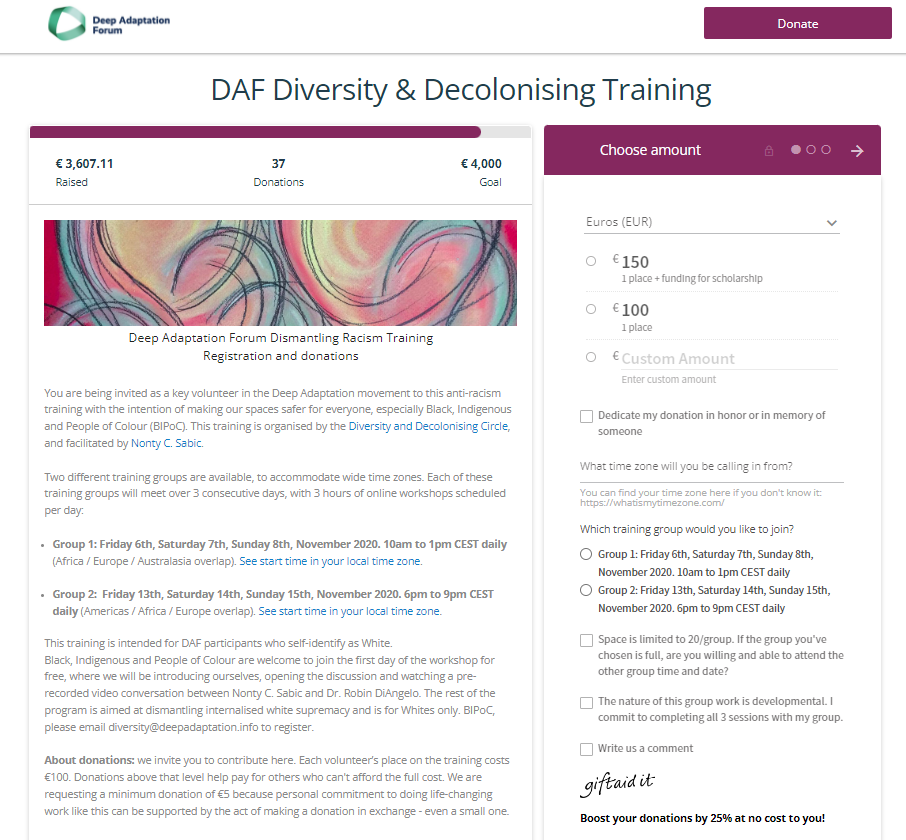
Get Started With Donorbox
How Do Diversity, Equity, and Inclusion Make a Nonprofit Stronger?
Nonprofits should be at the center of including diverse, equitable, and inclusive practices. Most nonprofits already include people from diverse backgrounds and require solid internal and external relationships for their existence.
Here’s how DEI initiatives can make a nonprofit organization stronger.
1. Truly represent the community
Nonprofits exist to address problems within a community and build a better world for their members. You can only do that with a true understanding of that population. Nonprofits will have a greater chance of developing working programs and policies by working together and including all voices.
2. Increase staff retention
Employee retention is an excellent way to learn where the lack of diversity and inclusion affects your nonprofit. The Covid pandemic and Great Resignation created an entirely new workplace for employees and employers. It has given more power to employees who can leave a workplace when their voices aren’t heard and when they don’t see a chance to advance.
D&I initiatives can help nonprofits address these issues. Businesses and nonprofits have found it easier to recruit more women, people of color, and individuals with disabilities by including more inclusive policies.
3. Create compelling programs and services
Nonprofits that consistently learn from outside opinions and update their programs based on real-life experiences create stronger programs and services. DEI initiatives open organizations up to new viewpoints and perspectives that help increase the reach and influence of these programs.
The below crowdfunding campaign by The Education Equity Center of St. Louis aims at creating a transformed, anti-racist education system through various programs and events.

4. Stronger donor relationships and an increase in funds
Nonprofits that have upgraded their programs to include a diverse volunteer base and workforce are more effective. These nonprofits are also better at communicating with beneficiaries and donors. Nonprofits can also strengthen donor relationships and raise more funds by creating an environment where people feel welcome and heard.
How to Develop DEI Strategies and Programs in Your Nonprofit?
DEI strategies help nonprofits benefit from less staff loss, stronger programs, and increased funds. Nonprofits can take the following steps to update programs and improve diversity, equity, and inclusiveness within their organization.
1. Identify needs
You must understand how and why changes are needed before adding any DEI strategies or programs. Ask yourself where your nonprofit lacks diversity.
- Do you have mainly older white men on your board?
- How diverse is your staff?
- Are all ethnicities promoted equally?
There are several ways to find answers to these questions. The first way is to visit your nonprofit’s organizational chart. These charts help define staff roles and relationships with each other. You can also get a better idea of your staff and volunteers’ primary language, generation, life experiences, and more through internal surveys and conversations.
Pro tip: Conduct anonymous surveys among employees and volunteers. They provide a more honest response.
2. Get your board involved
Your Board of Directors should play a primary role in adding DEI initiatives. Including leadership in these activities ensures the long-term success of your programs. The best way to start the board’s involvement is to develop a DEI board committee to oversee the process and determine the program’s mission, goals, budget, and expectations.
You can improve your board’s involvement with:
- Internal training for staff and volunteers.
- Conversations between staff and board members.
- Regular reviews and updated policies and procedures.
3. Create a DEI plan
Your nonprofit board’s primary responsibility is to lay out a plan to address diversity issues within your organization. Your board members must ask a few questions before creating this plan.
- Where are your organization’s biases?
- Why are staff, volunteers, and donors leaving?
- Is your nonprofit’s culture holding you back?
- What do the survey responses from staff and volunteers say?
Once you have answers to these questions, you can start developing plans and programs to address diversity issues. Students, staff, and volunteers at Oakwood School created a program to address diversity issues in their school. They’ve included activities like diversity week, speakers, and a parent organization to help students learn how to navigate the world in a fair and unbiased way.
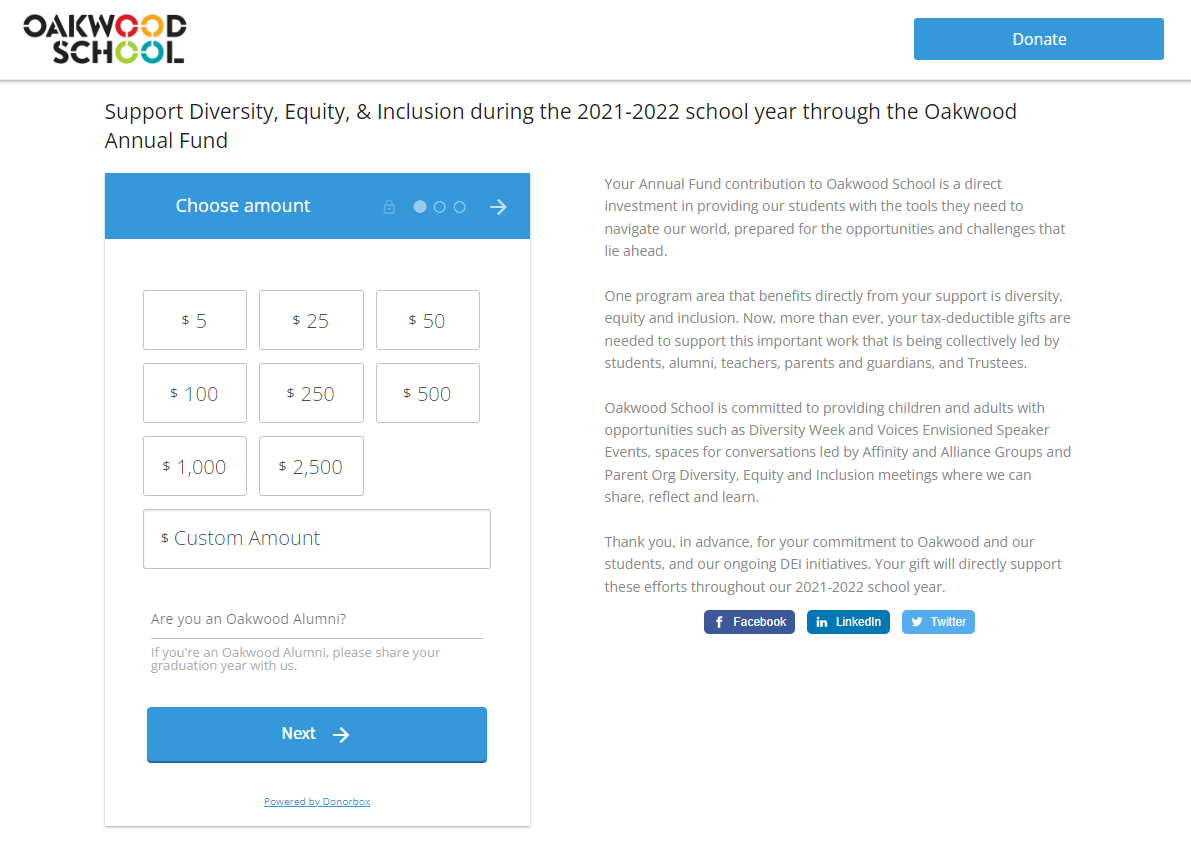
Your board DEI committee can determine which areas need change, and establish two to three selective plans.
4. Find ways to create true diversity and equity
DEI’s popularity can have some drawbacks. Unfortunately, diversity can quickly turn into a shallow endeavor for nonprofits that don’t do their due diligence to find where diversity, equity, and inclusion can make a real difference in their organization.
Focus on equity over diversity can create an environment where everyone feels welcome and heard. The Institute for Collective Wellbeing created the Collective Wellbeing Summit to learn what organizations, communities, and societies need to create effective DEI initiatives and to focus on belonging, autonomy, and a sense of purpose within an organization. It’s a free-entry virtual event created on Donorbox.
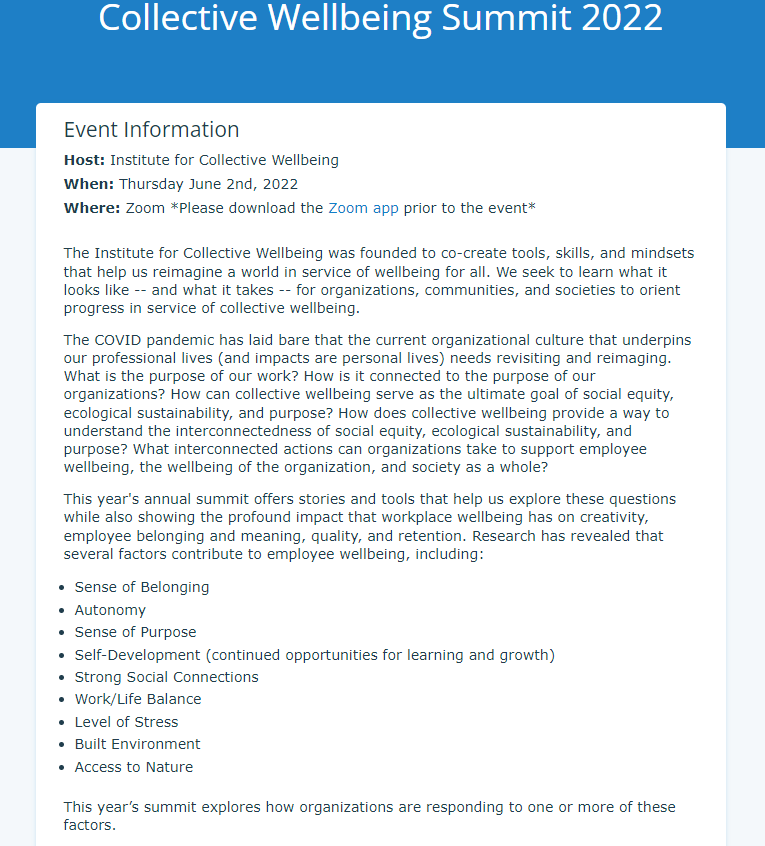
Try Donorbox Events
Your DEI committee must provide all members of staff and the donor base with fair and appropriate opportunities and resources to excel. Sometimes that means offering training to a specific set of staff members and volunteers or overlooking donation requirements for certain board members.
Pro tip: One way to include diverse perspectives on your board is to ask more of your beneficiaries to join. These individuals have first-hand experience with the challenges that exist for your community and how the organization can improve its programs and services. They may also have better luck finding stories for donor appeal letters from others the organization has helped.
5. Share DEI initiatives with the public
Once you begin to see the results of your DEI initiatives, you can start to share these improvements with your donor base and the public. Members of your board DEI committee should be the face of these programs.
Since they have been involved in creating policies and collecting feedback from your staff and community, they’ll be prepared to answer in-depth questions from the media and major donors.
Your donor base will be also interested in how DEI initiatives are improving the lives of your beneficiaries. It’s best to create a communication plan that includes social media, newsletters, and emails to share data and success stories that back up your claims of diversity and inclusion.
It’s advisable to also include these impact details in your donor impact report for the year.
6. Track successes and challenges
As your DEI policies and programs take effect, you’ll begin to see the results in various ways. Track how employee retention and satisfaction have improved. Your HR department should be performing exit interviews and sending out more surveys to see how others perceive these changes.
You may also see financial gains as a reaction to increased diversity and inclusion. DEI initiatives may give your nonprofit a way to reach a diverse range of supporters. You can track how these changes increase visits to your website and social media activity. As your relationship with staff, volunteers, and donors become stronger, you’ll also see the results of people feeling a greater attachment to your nonprofit.
Final Thoughts
Diversity, equity, and inclusion are not meant as a way for your organization to meet an external goal or jump on a trend. Instead, these changes to policies and programs must be taken seriously.
Not all nonprofits are ready to make drastic changes, but you can take small steps to learn from your community where to make changes.
If your nonprofit is looking for a database to securely collect detailed donor information, check out Donorbox Donor Management. It allows nonprofits to collect donor data from the donation form and store them securely. Nonprofits receive triggered notifications of important moments and can add any communication notes to better understand each member of their community. You can also add offline supporters and donations to the database. Donorbox also integrates with Salesforce NPSP, HubSpot, Blackbaud RE NXT, etc. to help you better donor management and communications.
Donorbox is primarily an online fundraising platform helping 80,000+ organizations across 96 countries. We have enabled them to raise over $2 billion in donations. If you want to be a part of this growth journey, sign up for free and get fundraising in about 15 minutes from now! Learn about our simple-to-use features on the website.
Want to reach your full donation potential? Explore Donorbox Premium – expert fundraising coaching and technical help at your fingertips! In addition, get access to high-powered tools and priority support to help boost your fundraising efforts. Pricing is personalized for every nonprofit.
Read insightful blogs and get free resources to better donor communications on the Donorbox Nonprofit Blog. Subscribe to our newsletter and we’ll send a curated list of our best resources (podcast episodes, webinars, latest product updates, articles, guides, etc.) to your inbox every month.
